Gurudwara Style Kada Prasad Recipe | Simple Atta Halwa Recipe | Kada Prasad
Welcome to my delectable world of Indian sweets! Today, I am thrilled to unravel the delightful essence of a traditional Punjabi delicacy – “Kada Prasad.” If you’ve never experienced the sheer bliss of this mouthwatering treat, prepare to be enchanted by its simple yet mesmerizing flavors.
Hailing from the vibrant and culturally rich state of Punjab in Northern India, Kada Prasad holds a special place in the hearts of millions. Known for its velvety texture, divine aroma, and heartwarming taste, this sweet confection is more than just a dessert; it’s a symbol of love, devotion, and community.
About Kada Prasad
Steeped in centuries-old tradition and served with utmost reverence in Sikh temples, known as Gurdwaras, Kada Prasad carries a spiritual significance that adds an extra layer of magic to its preparation and consumption. Every bite of this heavenly creation transcends taste buds and touches the soul, evoking a sense of profound contentment.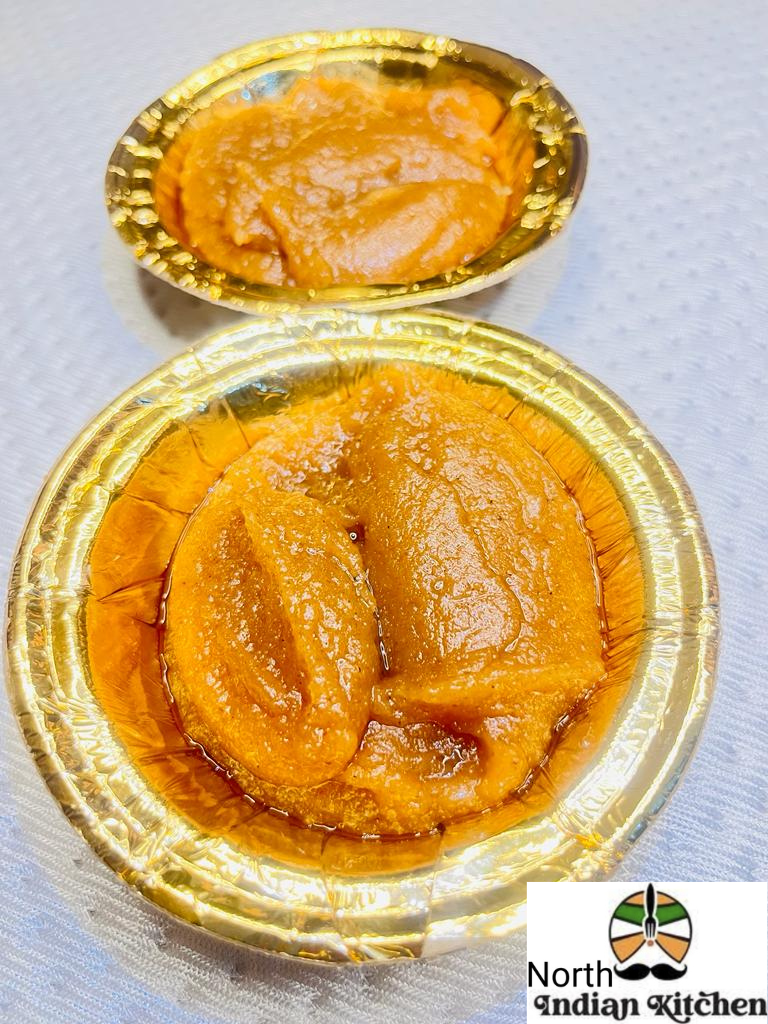
The cherished recipe of Kada Prasad, inviting you to savor its unique charm in your own kitchen. So, whether you’re an ardent fan of Indian sweets or simply a curious food enthusiast, prepare to be captivated by the divine allure of Kada Prasad. Embrace the warmth of tradition and the joy of culinary exploration as we delve into the heartwarming world of this treasured Punjabi delight.
Making of Kada Prasad
- In a heavy-bottomed kadai, add 1 cup ghee and let it melt over medium heat. Once the ghee is hot, add 1 cup wheat flour and start roasting it.
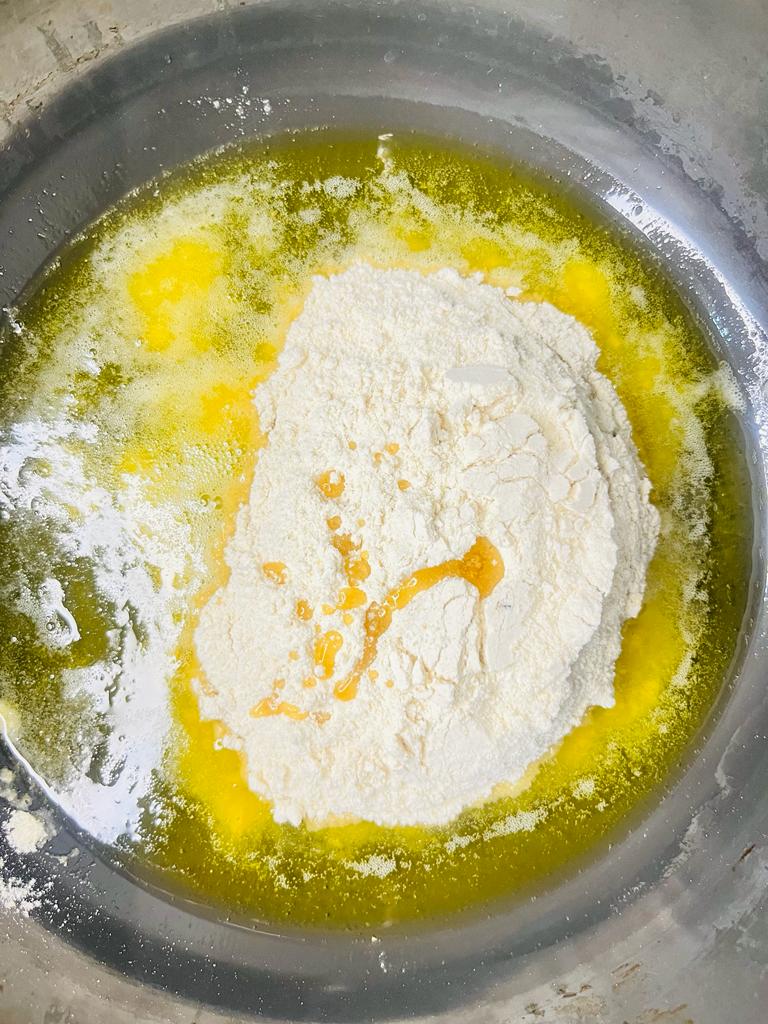
- Keep stirring the wheat flour continuously to ensure even browning. The flour should turn golden brown and release a delightful aroma. This process can take around 10-15 minutes, so patience is key here.
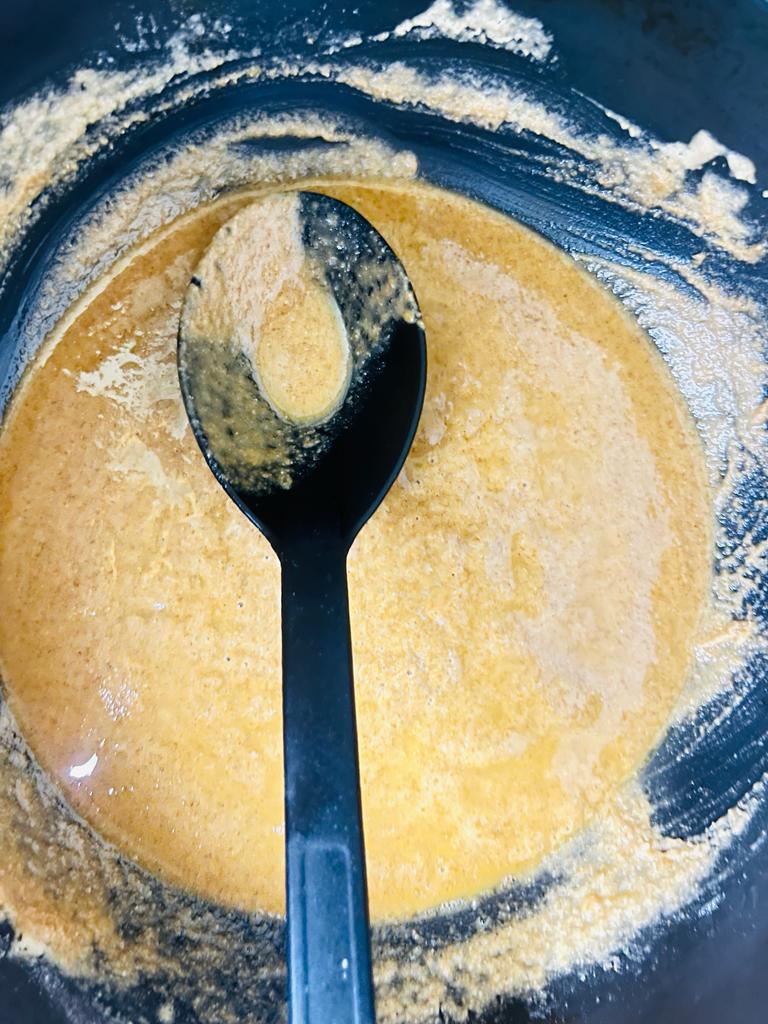
- Meanwhile, in a saucepan, prepare a sugar syrup by heating 3 cup water and 1 cup sugar until the sugar dissolves completely. You can add a few saffron strands to the syrup for an extra touch of flavor and color.
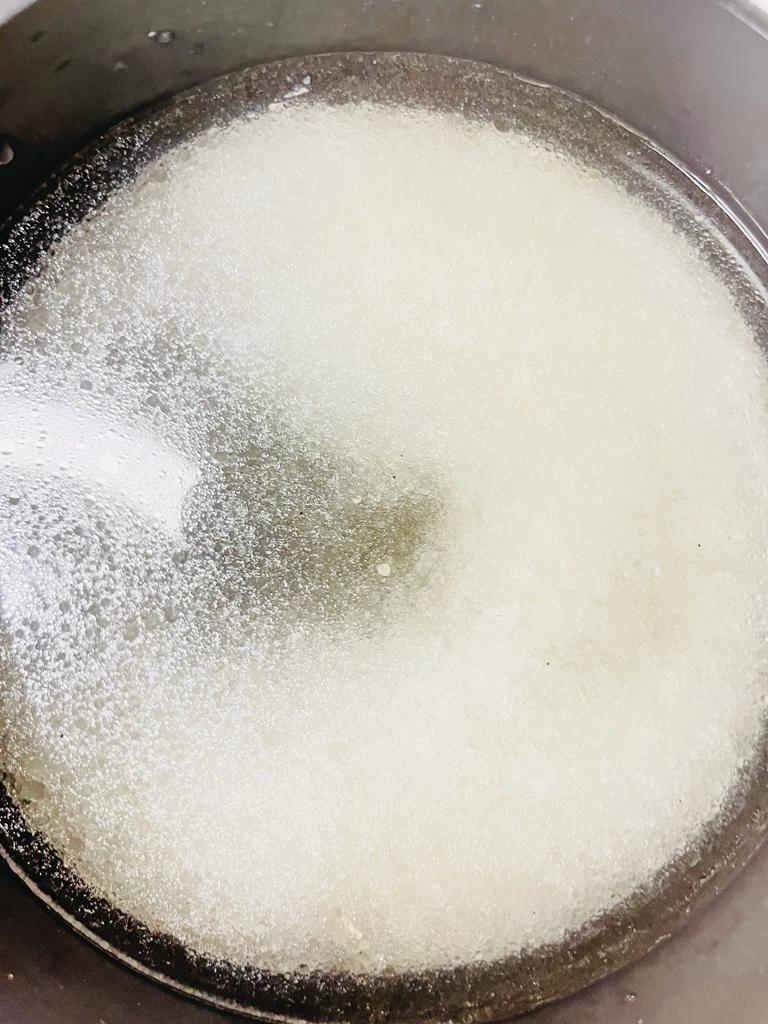
- Once the wheat flour is roasted to perfection, carefully add the hot sugar syrup to it. Be cautious as it might splutter due to the temperature difference.
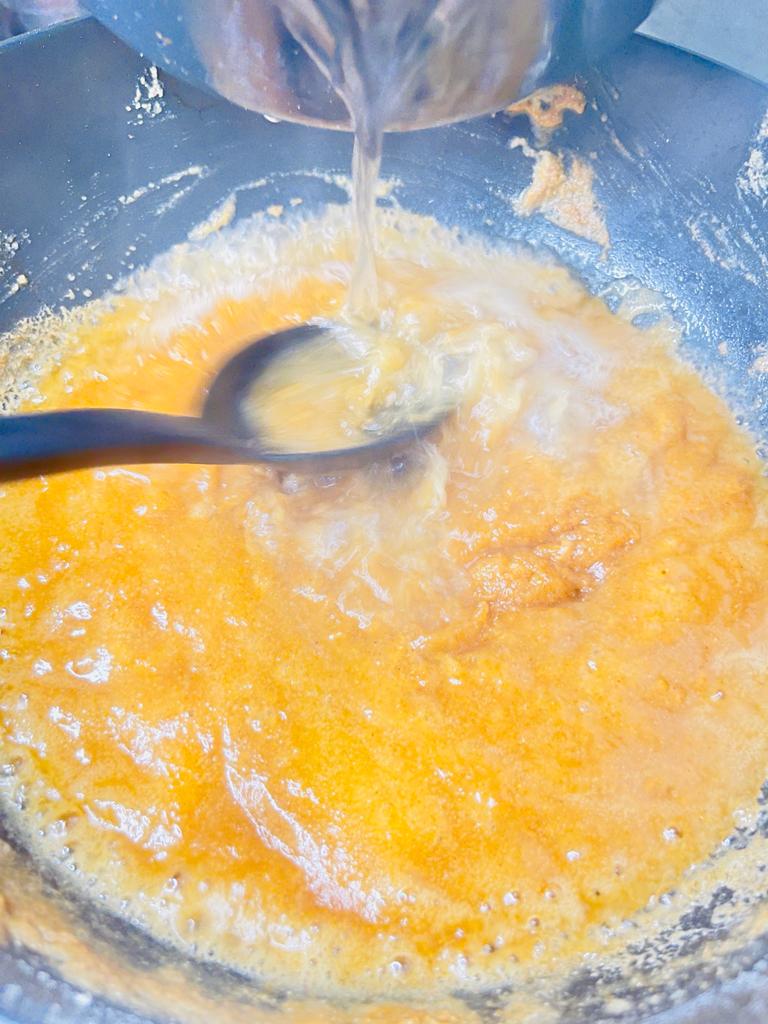
- Continue stirring the mixture to avoid lumps and ensure it cooks evenly. The halwa will absorb the syrup and thicken as it cooks.
- Add 1/2 teaspoon cardamom powder.
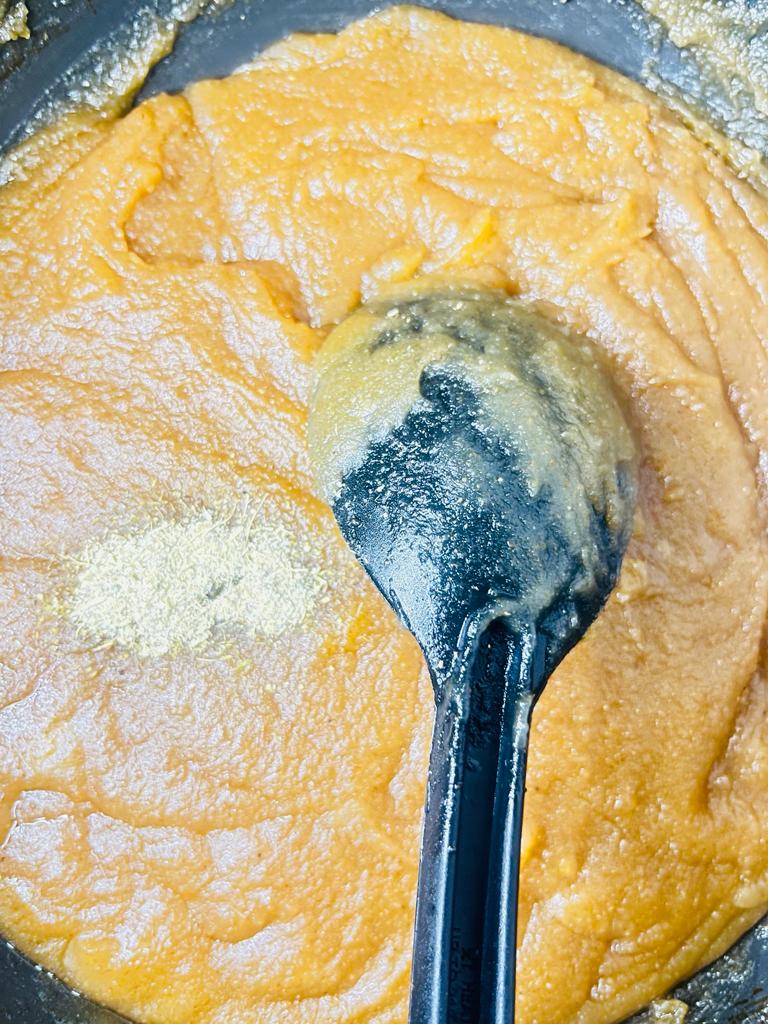
- Cook until the halwa reaches the desired consistency – neither too runny nor too dense. It should be smooth and glossy, with the ghee slightly separating from the mixture.
- Turn off the heat, and the aromatic kada prasad is now ready to be served.
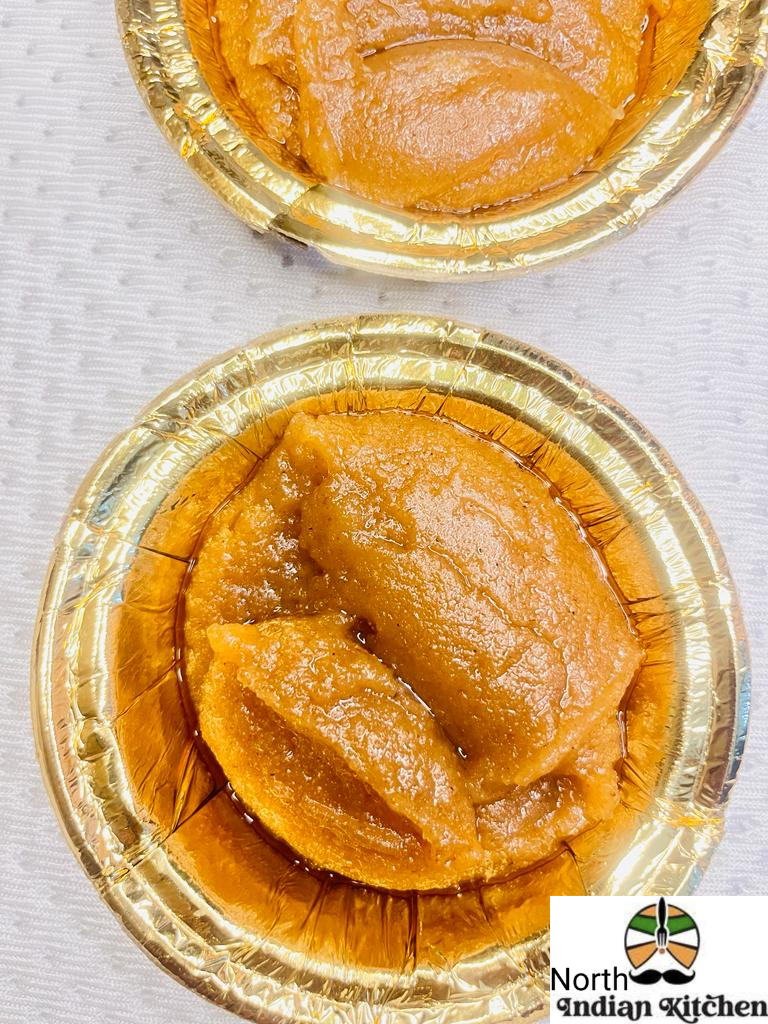
Expert Tips
Roasting the Wheat Flour: The key to a flavorful kada prasad lies in properly roasting the wheat flour. Use a heavy-bottomed pan and low to medium heat. Continuously stir the flour to ensure even browning and prevent it from burning. The roasted flour should have a golden brown color and a nutty aroma.
Quality of Ghee: Since kada prasad primarily relies on the flavors of wheat flour and ghee, it’s essential to use high-quality ghee. Good-quality ghee enhances the taste and richness of the halwa. Homemade ghee is the best choice, but if not available, opt for a reputable brand of pure ghee.
Sugar Syrup Consistency: When making the sugar syrup, ensure that the sugar is completely dissolved in the water. The syrup should be thin, without reaching the one-thread consistency, as the halwa will further thicken as it cools.
Proportions: The right balance of ingredients is crucial for a perfect halwa. Stick to the recommended proportions of wheat flour, ghee, sugar, and water to achieve the desired texture and taste.
Use Warm Sugar Syrup: To avoid lumps in the halwa, add warm sugar syrup to the roasted wheat flour. This helps in better absorption of the syrup and prevents the formation of clumps.
Keep Stirring: Continuous stirring is essential during the entire cooking process to avoid lumps and ensure even cooking. Stir in a circular motion to prevent sticking to the bottom of the pan.
Don’t Overcook: Avoid overcooking the halwa, as it may lead to a dry and dense texture. Once the halwa reaches the desired consistency, remove it from the heat immediately.
Serve Warm: Kada prasad tastes best when served warm. So, plan to serve it shortly after preparing, ensuring that the delightful aroma and flavors are at their peak.
FAQs
Q. What is Kada Prasad?
A. Kada Prasad is a traditional Punjabi sweet delicacy, popularly served in Sikh Gurdwaras (temples). It is made from simple ingredients like whole wheat flour, ghee (clarified butter), sugar, and water. This delectable sweet treat holds immense spiritual significance and is considered a symbol of love and devotion in the Sikh community.
Q. What does Kada Prasad taste like?
A. Kada Prasad boasts a velvety smooth texture and a rich, buttery flavor. The perfect balance of sweetness and the aroma of ghee make it an irresistible delight for anyone with a sweet tooth. The warm, comforting taste lingers on the palate, making it an unforgettable experience.
Q. What is the cultural significance of Kada Prasad?
A. In Sikhism, Kada Prasad holds deep spiritual importance and is considered a blessed offering. It is a sacred symbol of equality, as everyone, regardless of their social or economic status, receives the same offering in Gurdwaras. Preparing and serving Kada Prasad is an act of selfless service (seva) and is believed to bring blessings and divine grace to those who partake in it.
Q. Can I make Kada Prasad at home?
A. Absolutely! While the Kada Prasad served in Gurdwaras is prepared with utmost devotion and love, you can recreate this divine treat in your own kitchen. The recipe requires minimal ingredients and is relatively easy to follow. Embrace the process, and you’ll experience the joy of making this sacred sweet from scratch.
Q. Is Kada Prasad gluten-free?
A. No, Kada Prasad is not gluten-free as it is primarily made from whole wheat flour. The wheat flour is roasted in ghee before adding sugar and water to achieve its characteristic taste and texture.
Q. Can I store Kada Prasad?
A. Kada Prasad is best enjoyed fresh, but you can store it in an airtight container at room temperature for a day or two. However, it’s always recommended to consume it soon after preparation to relish its soft and tender consistency.
Q. How is Kada Prasad different from other Indian sweets?
A. Unlike many Indian sweets that come in various shapes and flavors, Kada Prasad is distinct for its simplicity. It is not molded or garnished elaborately; instead, it is served as a humble, melt-in-your-mouth pudding-like delight. Additionally, the spiritual significance and the act of seva associated with Kada Prasad set it apart from other sweets.
Q. Can non-Sikhs enjoy Kada Prasad?
A. Absolutely! While Kada Prasad holds special religious significance for Sikhs, its delicious taste and comforting nature can be enjoyed by people of all backgrounds. Partaking in this sweet offering is an excellent way to experience a taste of Sikh culture and tradition.
Q. Is Kada Prasad the same as “Halwa”?
A. Kada Prasad is often referred to as “Halwa” colloquially due to its pudding-like texture, but it is not the same as traditional Indian halwa. Traditional halwa is made using various ingredients like semolina (suji), chickpea flour (besan), or grated vegetables, whereas Kada Prasad is specifically made with whole wheat flour, ghee, sugar, and water.
A. How can I experience the authentic taste of Kada Prasad?
A. To truly appreciate the authentic taste and significance of Kada Prasad, consider visiting a Sikh Gurdwara during their langar (community kitchen) where it is served. Alternatively, try making it at home using a traditional recipe, and savor this divine treat with your loved ones.
Try our Other Dessert Recipes
Please be sure to rate this recipe or leave a comment below if you have made it. For more vegetarian & non – vegetarian inspirations, Sign Up for my emails or follow me on Instagram, Youtube, Facebook, Pinterest or Twitter.
Kada Prasad Recipe Card
Equipments
Ingredients
For Kada Prasad
- 1 cup Ghee
- 1 cup Wheat Flour
- ½ teaspoon Cardamom powder
For Sugar Syrup
- 3 cups Water
- 1 cup Sugar
Instructions
- Making Kada PrasadIn a heavy-bottomed pan, add 1 cup ghee and let it melt over medium heat. Once the ghee is hot, add 1 cup wheat flour and start roasting it.2. Keep stirring the wheat flour continuously to ensure even browning. The flour should turn golden brown and release a delightful aroma. This process can take around 10-15 minutes, so patience is key here.3. Meanwhile, in a separate saucepan, prepare a sugar syrup by heating 3 cup water and 1 cup sugar until the sugar dissolves completely.4. Once the wheat flour is roasted to perfection, carefully add the hot sugar syrup to it. Be cautious as it might splutter due to the temperature difference.5. Continue stirring the mixture to avoid lumps and ensure it cooks evenly. The halwa will absorb the syrup and thicken as it cooks.6. Add 1/2 teaspoon cardamom powder and the chopped nuts to the halwa, reserving some nuts for garnishing. Cook until the halwa reaches the desired consistency - neither too runny nor too dense. It should be smooth and glossy, with the ghee slightly separating from the mixture.7. Turn off the heat.Kada Prasad is now ready
Video
Notes
- I recommend to make kada prasad in desi ghee as it will enhance the taste.
- Saute the wheat until it turns golden brown otherwise the colour and taste will not come.
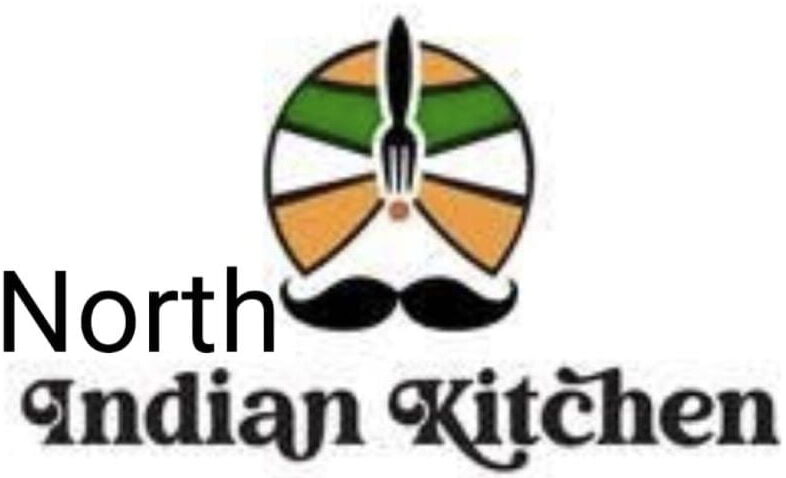
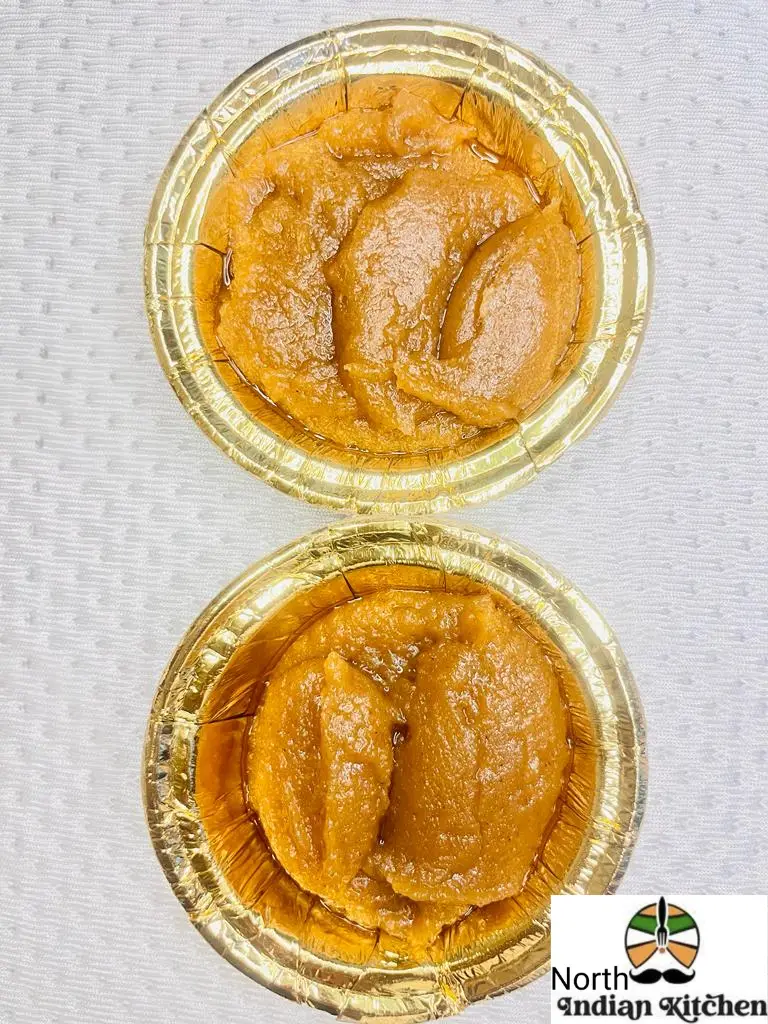
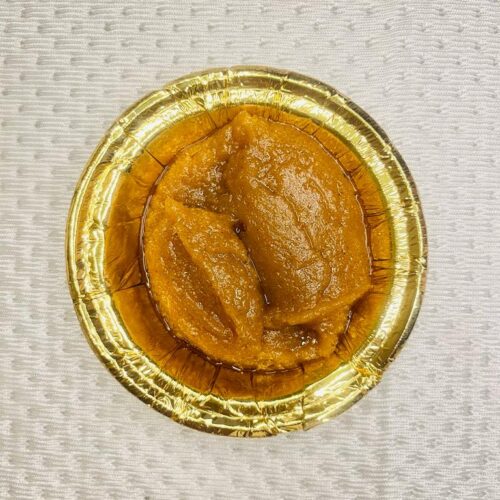
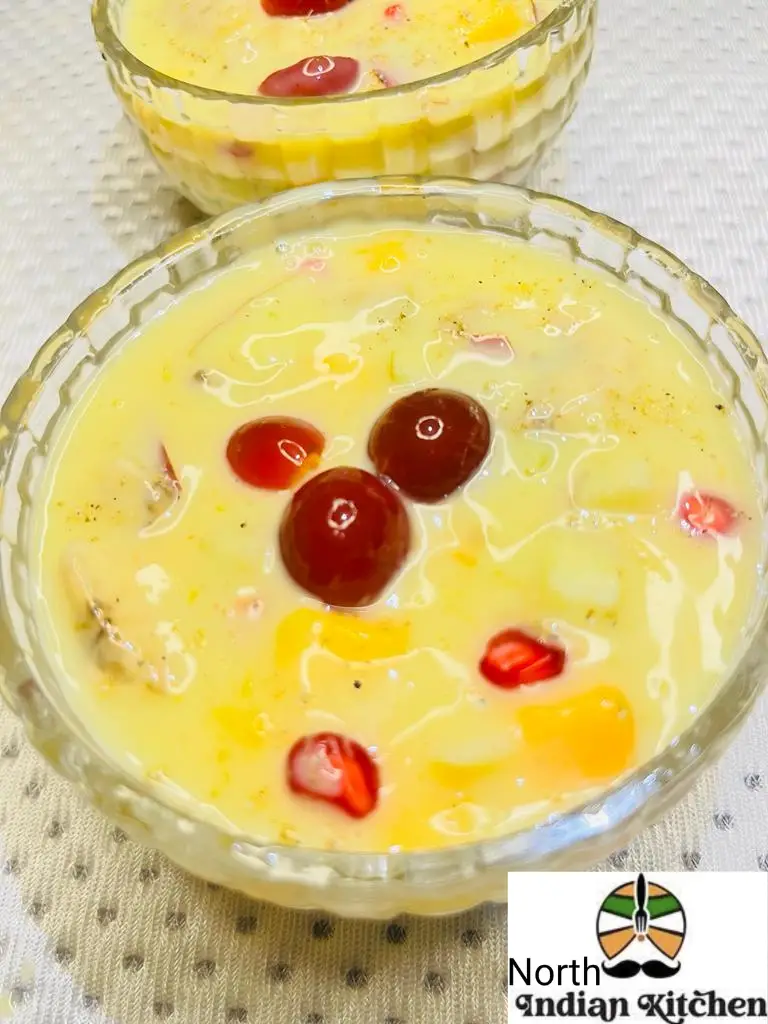
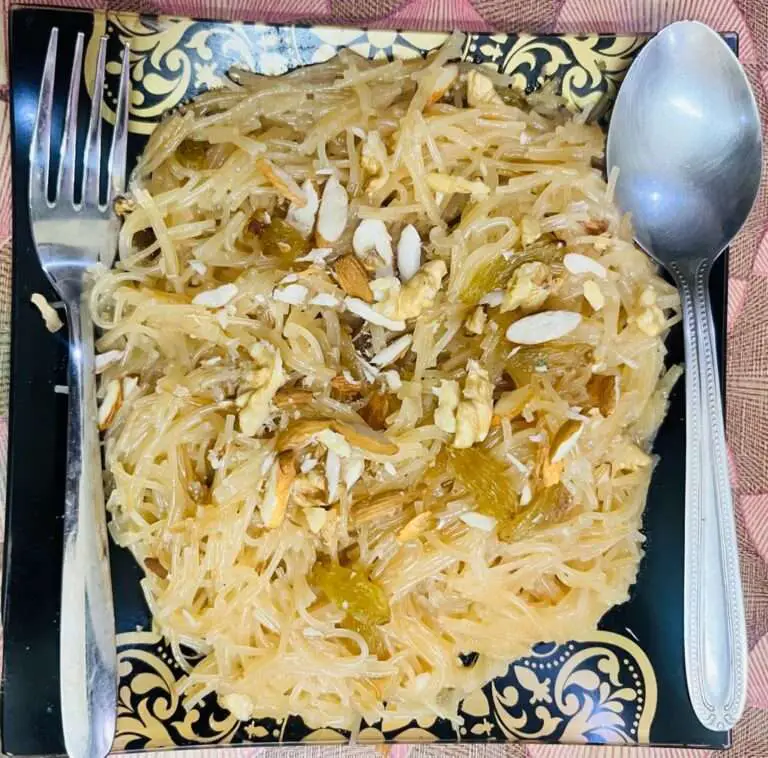
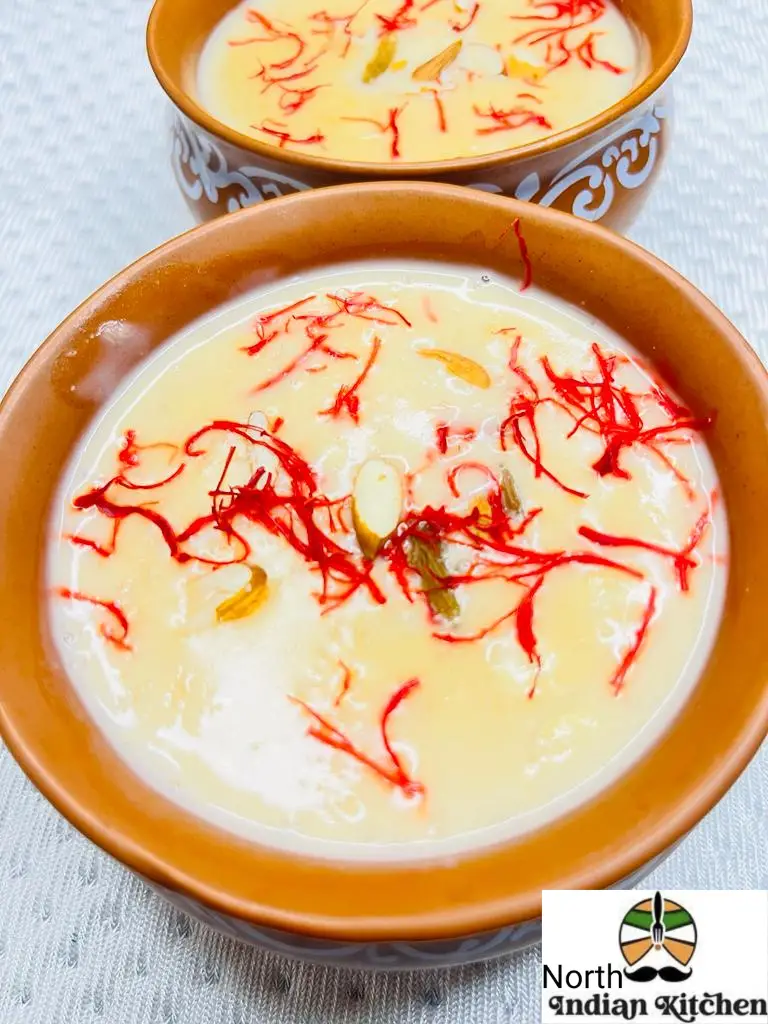
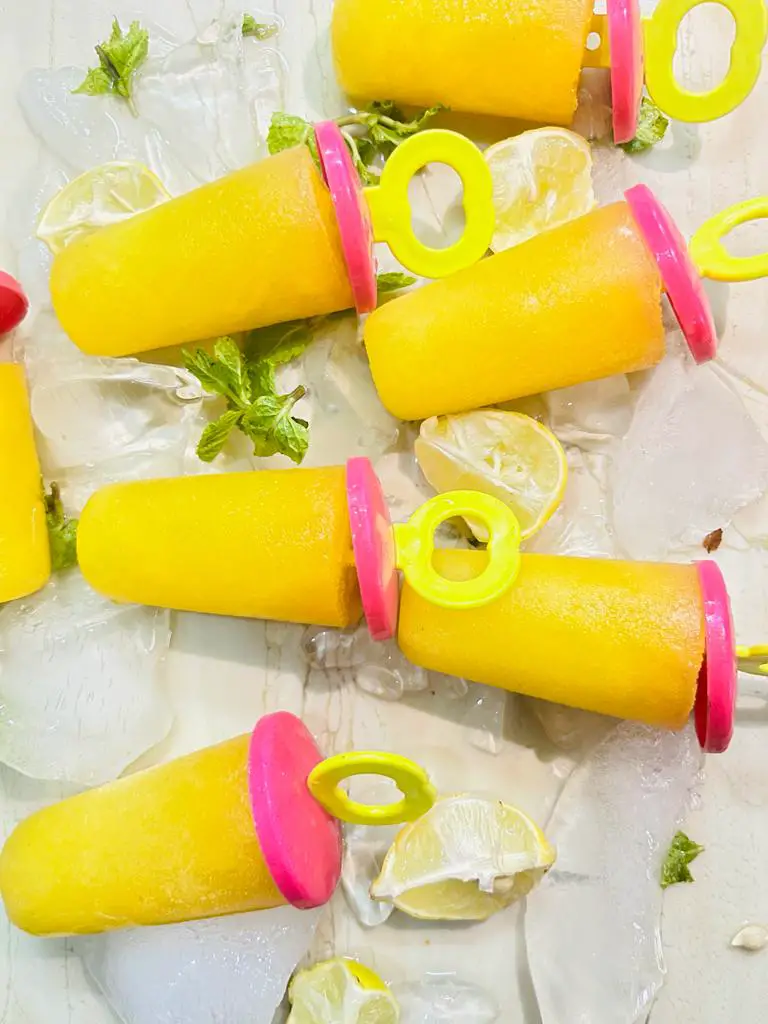
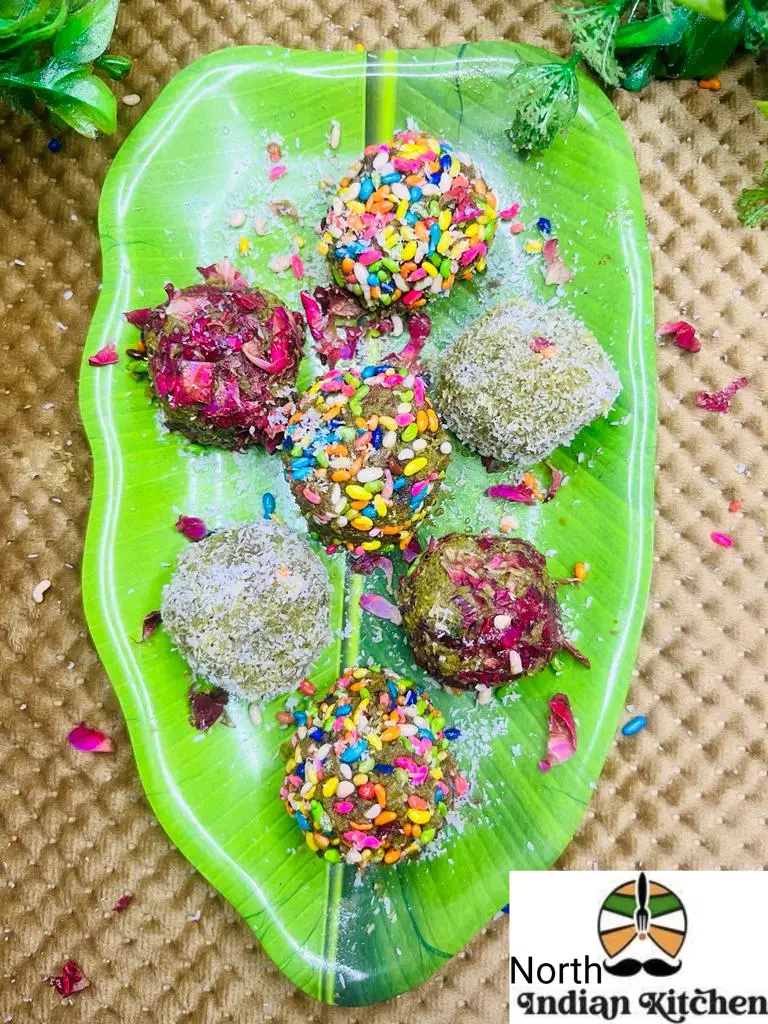

I’ve made this recipe as you said and it was made ditto gurudwara style.
Thanks for your feedback. We are very glad that you like our recipes.
Perfect Recipe
Thanks for your feedback. We are very glad that you like our recipes.